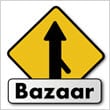Top 15 Best Version Control Software (Source Code Management Tools)
Best Version Control Software Tools and Systems
In this article, we are going to discuss the best version control/revision control tools that are available in the market.
Version Control Software VCS is also referred to as SCM (Source Code Management) tools or RCS (Revision Control System).
Version control is a way to keep a track of the changes in the code so that if something goes wrong, we can make comparisons in different code versions and revert to any previous version that we want. It is very much required where multiple developers are continuously working on /changing the source code.
Contact us to suggest a listing here.
Top 15 Version Control Software Tools
Let’s Explore!
1) Git

Git is one of the best version control tools that are available in the present market.
Features
- Provides strong support for non-linear development.
- Distributed repository model.
- Compatible with existing systems and protocols like HTTP, FTP, and ssh.
- Capable of efficiently handling small to large-sized projects.
- Cryptographic authentication of history.
- Pluggable merge strategies.
- Toolkit-based design.
- Periodic explicit object packing.
- Garbage accumulates until collected.
Pros
- Super-fast and efficient performance.
- Cross-platform
- Code changes can be very easily and clearly tracked.
- Easily maintainable and robust.
- Offers an amazing command-line utility known as git bash.
- Also offers GIT GUI where you can very quickly re-scan, state change, sign off, commit & push the code quickly with just a few clicks.
Cons
- Complex and bigger history logs become difficult to understand.
- Does not support keyword expansion and timestamp preservation.
Open Source: Yes
Cost: Free
Click here for the official Website.
2) CVS

It is yet another most popular revision control system. CVS has been the tool of choice for a long time.
Features
- Client-server repository model.
- Multiple developers might work on the same project parallelly.
- CVS client will keep the working copy of the file up-to-date and requires manual intervention only when an edit conflict occurs.
- Keeps a historical snapshot of the project.
- Anonymous read access.
- ‘Update’ command to keep local copies up to date.
- Can uphold different branches of a project.
- Excludes symbolic links to avoid a security risk.
- Uses delta compression technique for efficient storage.
Pros
- Excellent cross-platform support.
- A robust and fully-featured command-line client permits powerful scripting
- Helpful support from the vast CVS community
- allows good web browsing of the source code repository
- It’s a very old, well-known & understood tool.
- Suits the collaborative nature of the open-source world splendidly.
Cons
- No integrity checking for source code repository.
- Does not support atomic check-outs and commits.
- Poor support for distributed source control.
- Does not support signed revisions and merge tracking.
Open Source: Yes
Cost: Free
Click here for the official Website.
3) SVN
Apache Subversion, abbreviated as SVN aims to be a best-matched successor to the widely used CVS tool that we just discussed above.
Features
- Client-server repository model. However, SVK permits SVN to have distributed branches.
- Directories are versioned.
- Copying, deleting, moving, and renaming operations are also versioned.
- Supports atomic commits.
- Versioned symbolic links.
- Free-form versioned metadata.
- Space efficient binary diff storage.
- Branching is not dependent upon the file size and this is a cheap operation.
- Other features – merge tracking, full MIME support, path-based authorization, file locking, standalone server operation.
Pros
- Has the benefit of good GUI tools like TortoiseSVN.
- Supports empty directories.
- Have better windows support as compared to Git.
- Easy to set up and administer.
- Integrates well with Windows, leading IDE, and Agile tools.
Cons
- Do not store the modification time of files.
- Does not deal well with filename normalization.
- Does not support signed revisions.
Open Source – Yes
Cost: Free
Click here for the official Website.
4) Mercurial

Mercurial is a distributed revision-control tool that is written in python and intended for software developers. The operating systems that it supports are Unix-like, Windows and macOS.
Features
- High performance and scalability.
- Advanced branching and merging capabilities.
- Fully distributed collaborative development.
- Decentralized
- Handles both plain text and binary files robustly.
- Possesses an integrated web interface.
Pros
- Fast and powerful
- Easy to learn
- Lightweight and portable.
- Conceptually simple
Cons
- All the add-ons must be written in Python.
- Partial checkouts are not allowed.
- Quite problematic when used with additional extensions..
Open Source: Yes
Cost: Free
Click here for the official Website.
5) Monotone

Monotone, written in C++, is a tool for distributed revision control. The OS that it supports includes Unix, Linux, BSD, Mac OS X , and Windows.
Features
- Provides good support for internationalization and localization.
- Focuses on integrity over performance.
- Intended for distributed operations.
- Employs cryptographic primitives to track file revisions and authentications.
- Can import CVS projects.
- Uses a very efficient and robust custom protocol called netsync.
Pros
- Requires very low maintenance
- Good documentation
- Easy to learn
- Portable design
- Works great with branching and merging
- Stable GUI
Cons
- Performance issues were observed for some operations, the most visible was an initial pull.
- Can’t commit or checkout from behind the proxy (this is because of a non-HTTP protocol).
Open Source: Yes
Cost: Free
Click here for the official Website.
6) Bazaar

Bazaar is a version control tool that is based on a distributed and client-server repository model. It provides cross-platform OS support and is written in Python 2, Pyrex and C.
Features
- It has commands similar to SVN or CVS.
- It allows you to be working with or without a central server.
- Provides free hosting services through the websites Launchpad and Sourceforge.
- Supports file names from the entire Unicode set.
Pros
- Directories tracking is supported very well in Bazaar (this feature is not there in tools like Git, Mercurial)
- Its plugin system is fairly easy to use.
- High storage efficiency and speed.
Cons
- Does not support partial checkout/clone.
- Does not provide timestamp preservation.
Open Source: Yes
Cost: Free
Click here for the official Website.
7) TFS

TFS, an acronym for team foundation server is a version control product by Microsoft. It is based on a client-server, distributed repository model and has a proprietary license. It provides Windows, cross-platform OS support through Visual Studio Team Services (VSTS).
Features
- Provides entire application lifecycle support including source code management, project management, reporting, automated builds, testing, release management and requirement management.
- Empowers DevOps capabilities.
- Can be used as a backend for several IDEs.
- Available in two different forms (on-premises and online (known as VSTS)).
Pros
- Easy administration. Familiar interfaces and tight integration with other Microsoft products.
- Allows continuous integration, the team builds and unit test integration.
- Great support for branching and merging operations.
- Custom check-in policies to aid in implementing a steady & stable codebase in your source control.
Cons
- Frequent merge conflicts.
- Connection to the central repository is always required.
- Quite slow in performing pull, check-in, and branching operations.
Open Source: No
Cost: Free of cost for up to 5 users in the VSTS or for open source projects via codeplex.com; else paid and licensed through MSDN subscription or direct buy.
The server license can be bought for around $500 and the client licenses are also nearly the same.
Click here for the official Website.
8) VSTS

VSTS (Visual Studio Team Services) is a distributed, client-server repository model-based version control tool provided by Microsoft. It follows the Merge or Lock concurrency model and provides cross-platform support.
Features
- Programming Language: C# & C++
- Changeset storage method.
- File and Tree scope of change.
- Network protocols supported: SOAP over HTTP or HTTPS, Ssh.
- VSTS offers elastic build capabilities thru build hosting in Microsoft Azure.
- DevOps enables
Pros
- All the features that are present in TFS are available in VSTS in the cloud.
- Supports almost any programming language.
- Instinctive User Interface
- Upgrades get automatically installed.
- Git access
Cons
- Signed revisions are not allowed.
- The “work” section is not very well optimized for large teams.
Open Source: No, it is proprietary software. But, a free trial version is available.
Cost: Free for up to 5 users. $30/mo for 10 users. Also offers a lot of free and paid extensions.
Click here for the official Website.
9) Perforce Helix Core
Helix Core is a Client-server and distributed revision control tool developed by Perforce Software Inc. It supports Unix-like, Windows and OS X platforms. This tool is mainly for large-scale development environments.
Features:
- Maintains a central database and a master repository for the file versions.
- Supports all file types and sizes.
- File-level asset management.
- Maintains a single source of truth.
- Flexible branching
- DevOps ready
Pros
- Git accessible
- Lightning fast
- Massively scalable
- Easy to track the change list.
- Diff tools make it very easy to identify code changes.
- Works well with the visual studio through the plugin.
Cons
- Managing multiple workspaces is quite difficult.
- Perforce Streams makes managing multiple workspaces quite simple. Users are only seeing data that is relevant, and it adds traceability.
- Rollbacking changes are troublesome if its split across multiple change lists.
- We do offer the ability to undo a submitted change list (in P4V) where a user can just right-click a given change list and perform that action.
Open Source: No, it’s proprietary software. But, a free trial version for 30 days is available.
Cost: Helix Core is now always free for up to 5 users and 20 workspaces.
Click here for the official Website.
10) IBM Rational ClearCase

ClearCase by IBM Rational is a client-server repository model based on software configuration management tool. It supports a lot of Operating systems including AIX, Windows, z/OS (limited client), HP-UX, Linux, Linux on z Systems, and Solaris.
Features:
- Supports two models i.e UCM and base ClearCase.
- UCM stands for Unified Change Management and offers an out-of-the-box model.
- Base ClearCase offers basic infrastructure.
- Capable of handling huge binary files, a large number of files, and big repository sizes.
- Allows branching, labeling, and versioning of directories.
Pros
- Simple UI
- Integrates with Visual Studio.
- Handles parallel development.
- ClearCase Views are very convenient as they allow to switch between projects and configurations as opposed to the local workstation model of the other version control tools.
Cons
- Slow recursive operations.
- Evil Twin problem – Here, two files with the same name get added to the location instead of versioning the same file.
- No advanced API
Open Source: No, it is a proprietary tool. But, the free trial version is available.
Cost: $4600 for each floating license (detained automatically for a 30-minutes minimum for each user, can be surrendered manually)
Click here for the official Website.
11) Revision Control System
Revision Control system (RCS), developed by Thien-Thi Nguyen works on the local repository model and supports Unix-like platforms. RCS is a very old tool and was first released in 1982. It is an early version of VCS(Version Control System).
Features
- Was originally intended for programs, but, is also helpful for text documents or config files that often get revised.
- RCS can be considered as a set of Unix Commands that permits various users to build and maintain program code or documents.
- Allows revision of documents, committing changes, and merging docs together.
- Store revisions in a tree structure.
Pros
- Simple architecture
- Easy to work with
- It has a local repository model, so the saving of revisions is independent of the central repository.
Cons
- Less security, version history is editable.
- At a time, only one user can work on the same file.
Open Source: Yes
Cost: Free
Click here for the official Website.
12) Visual SourceSafe(VSS)

VSS by Microsoft is a Shared folder repository model-based revision control tool. It supports Windows OS only.
It is intended for small software development projects.
Features
- Creates a virtual library of computer files.
- Capable of handling any file type in its database.
Pros
- Fairly easy-to-use interface.
- It lets a single-user system be assembled with fewer configurations when compared to any other SCM system.
- Easy backup process.
Cons
- Lacks many important features of a multi-user environment.
- Database corruption is one of the serious problems noted with this tool.
Cost: Paid. Nearly $500 for each license or single license which is comprised of every MSDN subscription.
Click here for the official Website.
13) CA Harvest Software Change Manager
This is a revision control tool provided by CA technologies. It supports many platforms including Microsoft Windows, Z-Linux, Linux, AIX, Solaris, Mac OS X.
Features
- Changes are made to a “change package”. Harvest supports both version control as well as change management.
- Has a pre-defined lifecycle from Test to Production stages.
- Fully customizable project environments. Project means ‘entire control framework’ in Harvest.
Open Source: No, this tool comes with Proprietary EULA License. However, a free trial is available.
Pros
- Helps very well in tracking the application flow from dev to prod environments. The biggest asset of this tool is this lifecycle feature.
- Deployment in a safe manner.
- Stable and scalable.
Cons
- Could be more user-friendly.
- The merging feature could be improved.
- Handling Polar Requests For Code Reviews Is challenging.
Cost: Not disclosed by the vendor.
Click here for the official Website.
14) PVCS

PVCS (an acronym for Polytron Version Control System), developed by Serena Software is a client-server repository model-based version control tool. It supports Windows and Unix-like platforms. It provides version control of source code files. It is mainly intended for small development teams.
Features
- Follows the locking approach to concurrency control.
- No built-in merge operator but has a separate merge command.
- Supports multi-user environment.
Pros
- Easy to learn and use
- Manages the file versions regardless of the platforms.
- Gets easily integrated with Microsoft Visual Studio .NET and Eclipse IDEs.
Cons
- Its GUI has some quirks.
Open Source: No, it is proprietary software.
Cost: Not disclosed by the vendor.
Click here for the official Website.
15) darcs

darcs (Darcs Advanced Revision Control System), developed by The Darcs team is a distributed version control tool that follows the merge concurrency model. This tool is written in Haskell and supports Unix, Linux, BSD, ApplemacOS, and MS Windows platforms.
Features
- Capable of selecting which changes to accept from other repositories.
- Communicates with local and remote repositories through SSH, HTTP, email or an unusually interactive interface.
- Works on the concept of linearly ordered patches.
Pros
- Has fewer and more interactive commands when compared to other tools like git and SVN.
- Offers send system for direct mailing.
Cons
- Performance issues related to merging operations.
- Installation takes a long time.
Open Source: Yes
Cost: This is a free tool.
Click here for the official Website.
A few more Version Control tools that are worth mentioning are:
16) AccuRev SCM
AccuRev is a proprietary revision control tool developed by AccuRev, Inc. Its main features include streams and parallel development, private developer history, change packages, distributed development, and automated merging.
Click here for the official Website.
17) Vault
Vault is a proprietary revision control tool developed by SourceGear LLC that works on CLI platform. This tool is the closest competitor to Microsoft’s Visual Source Safe. The backend database for Vault is Microsoft SQL Server. It supports atomic commits.
Click here for the official Website.
18) GNU arch
GNU arch is a distributed and decentralized revision control tool. It is a free and open-source tool. This tool is written in C language and supports GNU/Linux, Windows, Mac OS X Operating systems.
Click here for the official Website.
19) Plastic SCM
Plastic SCM is a proprietary version control tool that works on.NET/Mono platform. It follows a distributed repository model. The Operating systems that it supports include Microsoft Windows, Linux, Solaris, Mac OS X. It comprises of a command-line tool, a Graphical User Interface, and integration with numerous IDEs.
This tool deals with big projects excellently.
Click here for the official Website.
20) Code Co-op
Code Co-op, developed by Reliable Software is a peer-to-peer revision control tool. It follows distributed, a peer-to-peer architecture where it creates a replica of its own database on every machine involved in the shared project. One of its interesting distinguishing features is its inbuilt wiki system for documentation.
Click here for the official Website.
Conclusion
In this article, we discussed the best version control software. As we have seen, each tool has its own distinguishing features, pros, and cons. Few of them were open-source tools while others were paid. Some suit the small enterprise model well while the others suit the big enterprises.
So, you need to choose the right tool as per your requirements, after weighing their pros and cons. For paid tools, I would suggest you first explore their free trial versions before you buy.
Contact us to suggest a listing here.